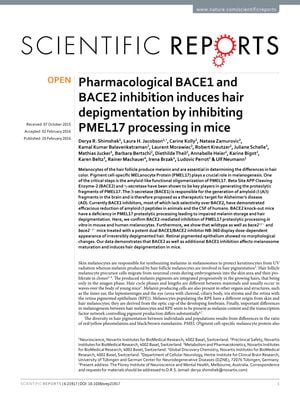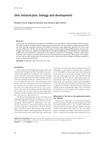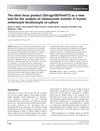Pharmacological BACE1 and BACE2 Inhibition Induces Hair Depigmentation by Inhibiting PMEL17 Processing in Mice
February 2016
in “
Scientific reports
”

TLDR Blocking BACE1 and BACE2 enzymes causes hair color loss in mice.
In the study, researchers investigated the role of Beta Site APP Cleaving Enzyme-1 (BACE1) and BACE2 in hair pigmentation by examining their effect on the processing of PMEL17, a protein crucial for melanin production in hair follicle melanocytes. They found that BACE2 knockout mice exhibited impaired PMEL17 processing, leading to deficient melanin storage and hair depigmentation. The study also showed that treatment with a potent dual BACE1/BACE2 inhibitor, NB-360, caused a dose-dependent depigmentation of hair in wildtype, bace2 +/−, and bace2 −/− mice, which was irreversible. However, there were no morphological changes observed in the retinal pigmented epithelium. These findings suggest that inhibition of BACE2, and to some extent BACE1, can affect melanosome maturation and result in hair depigmentation in mice.



